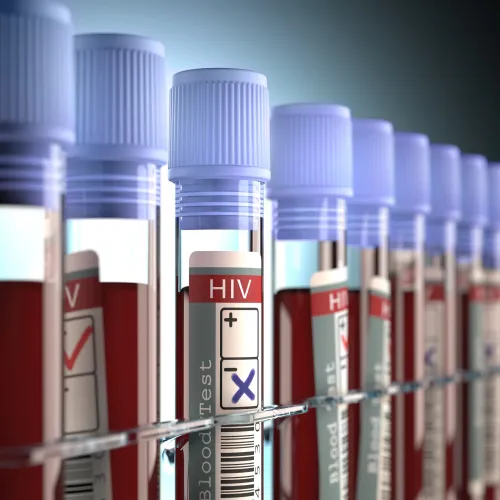ED Coding and Reimbursement Alert
Know Nuances When Choosing Between 99285, 99291
Remember, high-level ED E/Ms can resemble critical care.
When your provider treats a very sick or injured patient, there is a good chance that they’ll have to perform critical care. That’s not always the case, however.
Why? You must meet a minimum time threshold in order to report critical care, and that time can only be spent performing certain duties. Further, there are rules about just how sick or injured a patient must be in order to report critical care.
During his recent webinar “Emergency Department Coding Complexities,” Hamilton Lempert, MD, FACEP, CEDC, vice president of coding policy at TeamHealth, ran us through the basics of differentiating between critical care encounters and other ED services.
Know Definitions for 99285, 99291 Patients
Lempert said critical care is defined as “an illness or injury that acutely impairs one of more vital organ systems such that there is a high probability of imminent or life-threatening deterioration in the patient’s condition.” Report this service with 99291 (Critical care, evaluation and management of the critically ill or critically injured patient; first 30-74 minutes) and +99292 (… each additional 30 minutes (List separately in addition to code for primary service)), when appropriate.
Clearly, there will be claims that are on the borderline between 99291 and the highest-level ED E/M service: 99285 (Emergency department visit for the evaluation and management of a patient, which requires these 3 key components within the constraints imposed by the urgency of the patient’s clinical condition and/or mental status: A comprehensive history; A comprehensive examination; and Medical decision making of high complexity…). Lempert has a memorable method to remember the basic difference between a lot of 99291 and 99285 claims.

When you code 99291, “the patient does have the problem for which the physician is checking.” Some confirmed conditions that could require critical care include, but are not limited to: acute kidney injury, acute liver failure, acute respiratory failure, cardiogenic shock, cerebral edema, and acute myocardial infarction (MI).
When you code 99285, “the presenting problems are of high severity and pose an immediate, significant threat to life or physiologic function. This patient might have the problem for which the physician is checking,” Lempert explained. So, if the physician suspects MI but it was just acid reflux, you might be looking at a 99285 claim.
Remember: These are not hard and fast rules, just guidelines on choosing between 99291 and 99285. Always code to the notes, and check with your provider or payer if you have questions about whether a service qualifies as critical care.
Time Has Come Today … for Counting Minutes
Lempert reminded listeners that “for a critical care patient, medical decision making [MDM], has to be high, but there’s no history or physical requirements; also, it does have to have time documented.”
Remember, 99291 time does not include:
- Time spent with other patients
- Time spent performing most procedures
Also: The time spent on critical care does not need to be continuous. “However, the time must be spent with only that patient; you can’t be taking care of other patients at the same time, and you have to exclude most other procedures that were performed, such as central lines, intubating, CPR [cardiopulmonary resuscitation], etc.,” Lempert said.
Check out the full list of procedures bundled into critical care, per CPT® 2022:
- Interpretation of cardiac output measurements (CPT® code +93598)
- Pulse oximetry (94760, 94761, 94762)
- Chest x-rays, professional component (71045, 71046)
- Blood gases, and collection and interpretation of physiologic data (e.g., ECGs, blood pressures, hematologic data)
- Gastric intubation (43752, 43753)
- Transcutaneous pacing (92953)
- Ventilator management (94002-94004, 94660, 94662)
- Vascular access procedures (36000, 36410, 36415, 36591, 36600)
Document time in the number of minutes, not a range, recommended Lempert. “I like clinicians to document why this patient was critical care, documenting their time specifically in minutes … a lot of payers want the exact specific minutes.”

Check Out These (Potential) Critical Care Examples
Some things that could be conditions of critical care:
- Increased or decreased vital signs, such as an elevated heart rate (e.g., > 140)
- Patients having severe reactions to certain medications, such as adenosine
- Concerning lab results, such as very low potassium (e.g., < 2.5)
- Certain diagnoses, such as acute MI
“All of these suggest conditions that could be critical care, but there is no official list saying ‘You have to have this condition to be critical care,’” said Lempert.
Putting it all Together
The line between critical care and another codeable service is often very fine. Consider, for example, Lempert’s discussion of how ED trauma scenarios can conjure up the critical care question.
DOA in the parking lot: If the physician is just confirming the death of a patient — such as in the ambulance bay — then this is not a 99291.
“There’s very little evaluation management that went on” in that situation, he explained.
CPR with more E/M: “If, however, they do CPR and it goes on for a while, and they do a lot of evaluation and management, multiple rounds of drugs, get some history from the family,” you’d likely be able to justify 99285 and 92950, Lempert explained. Remember to add modifier 25 to 99285 (Significant, separately identifiable evaluation and management service by the same physician or other qualified health care professional on the same day of the procedure or other service) to show that a significant, separately identifiable E/M service preceded the CPR.
CPR with resuscitation and critical care: If the provider performs CPR and resuscitates the patient, and then provides at least 30 minutes of critical care, you could report 99291 and 92950, according to Lempert.
In these situations, you must remember that CPR isn’t considered part of the critical care package, meaning you can’t count CPR time as critical care time.
“But if a patient gets resuscitated, and you provide 30 minutes of additional critical care beyond the time spent performing CPR, then you can bill critical care and CPR,” Lempert said.
Related Articles
ED Coding and Reimbursement Alert
- Critical Care:
Know Nuances When Choosing Between 99285, 99291
Remember, high-level ED E/Ms can resemble critical care. When your provider treats a very sick [...] - ICD-10 Coding:
Put Sequencing Atop Your Priority List When Choosing Dx Codes
Patient outcome, and your reimbursement, can be affected by poor sequencing. Proper sequencing is essential [...] - Compliance:
Reduce Duplicate Claims With Advice Regarding Modifiers
Do you know the basics on repeat modifiers? When Medicare denials start piling up at [...] - You Be the Coder:
Nonspecific Lumbago Calls for This Code
Question: Encounter notes indicate that the provider treated a patient with “lumbago NOS.” I’m having [...] - Reader Questions:
Go Digital for Finger Fx Modifier
Question: Encounter notes indicate that after a level-four evaluation and management (E/M) service, the ED [...] - Reader Questions:
Slow Down When Considering Coding Strapping Twice
Question: If the provider performs strapping on a patient’s ankle and foot, can we report [...] - Reader Questions:
Look for More Accurate Code Before Using Modifier 52
Question: Encounter notes indicate that the ED physician performed an evaluation and management (E/M) service for [...] - Reader Questions:
Check Bronchoscopy Type Before Choosing Code
Question: The ED physician performs a bronchoscopy. How should I report this procedure? AAPC Forum [...]




